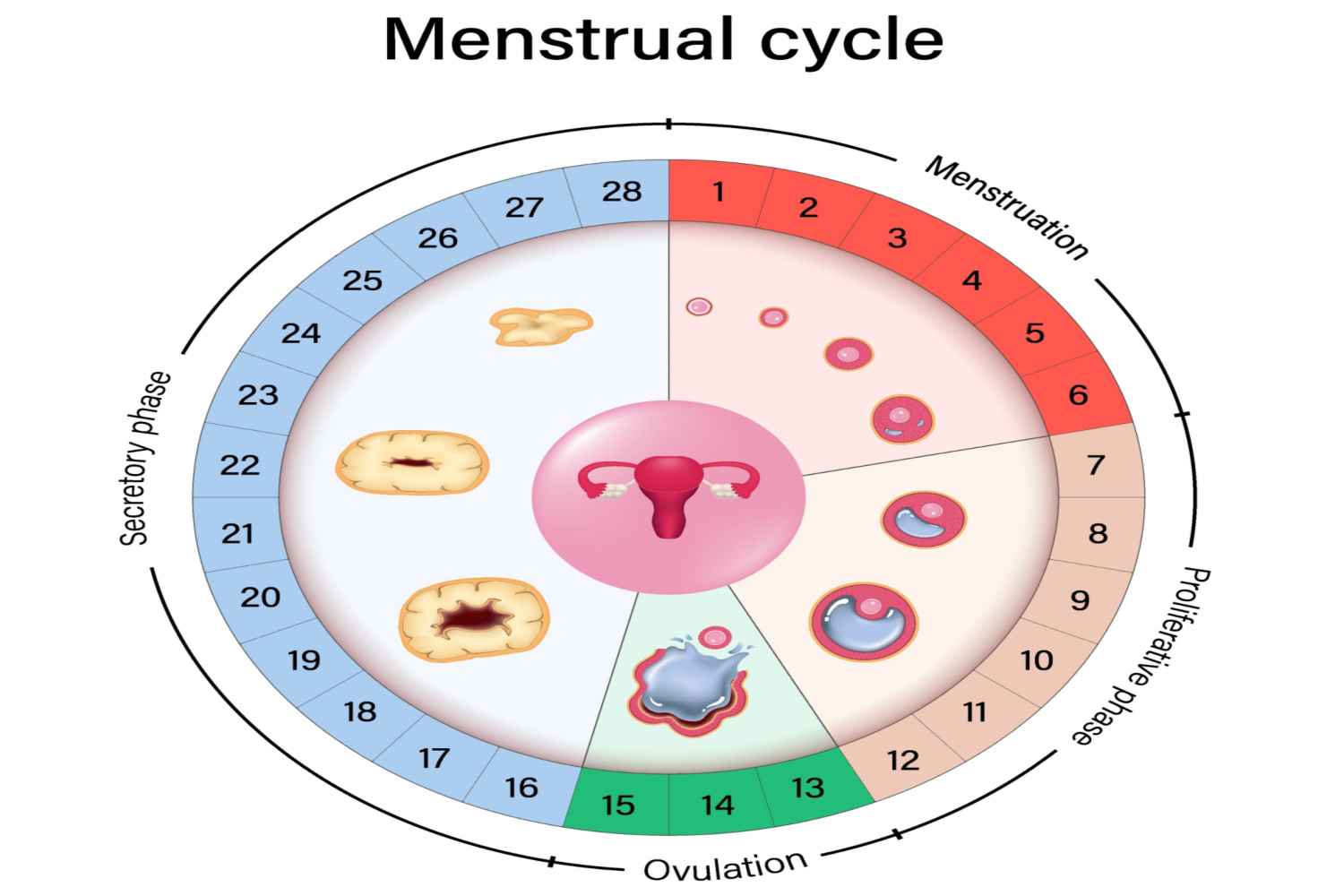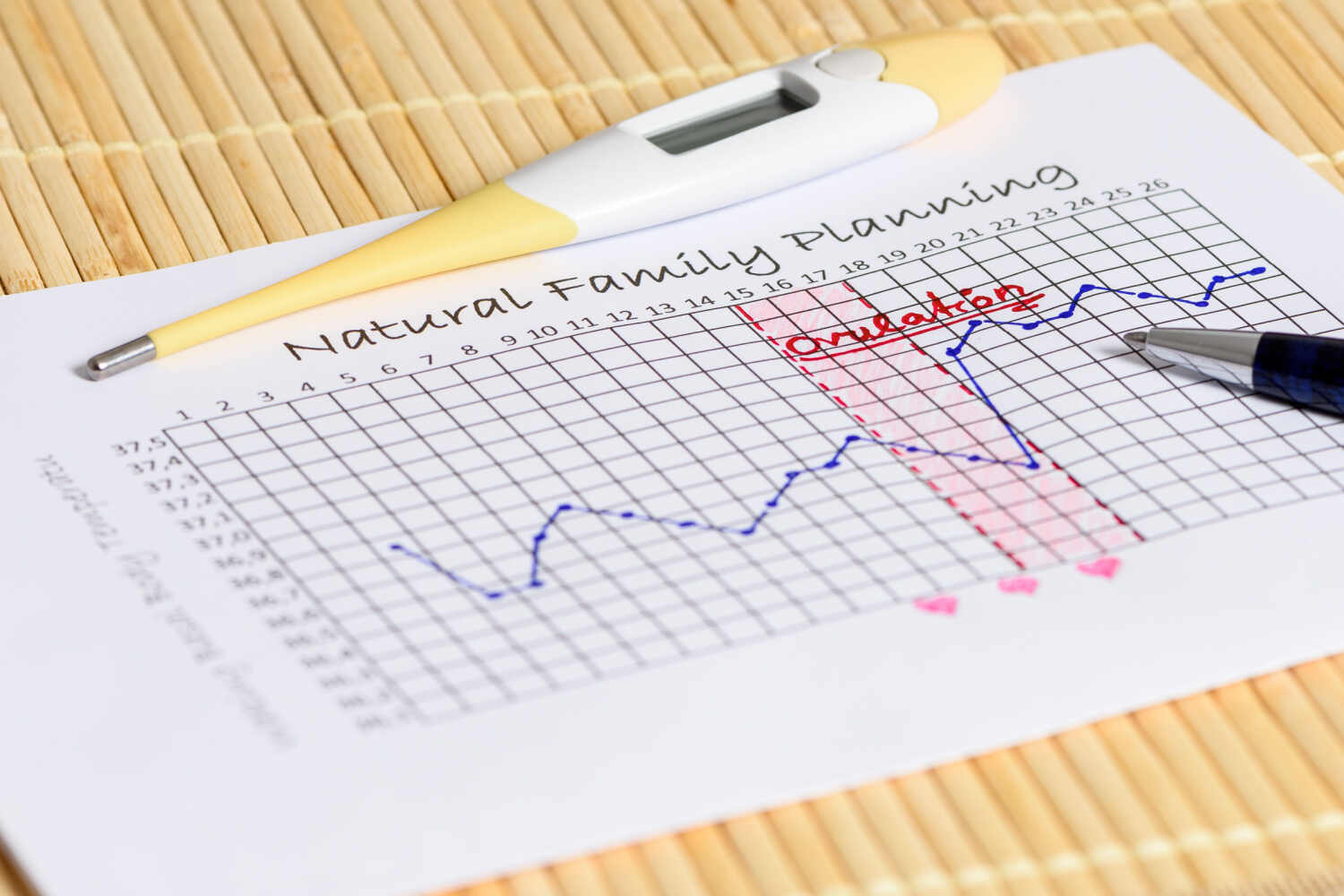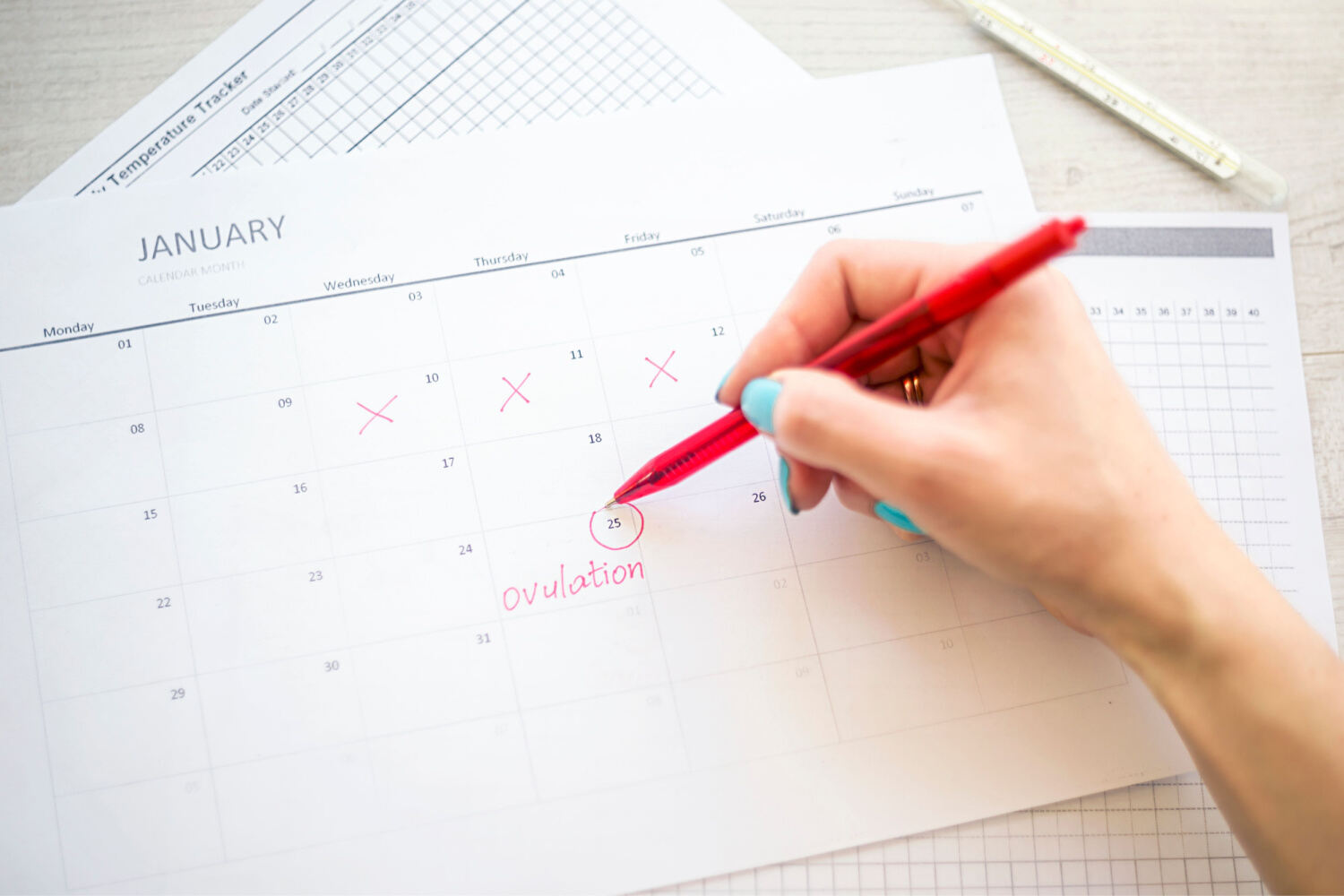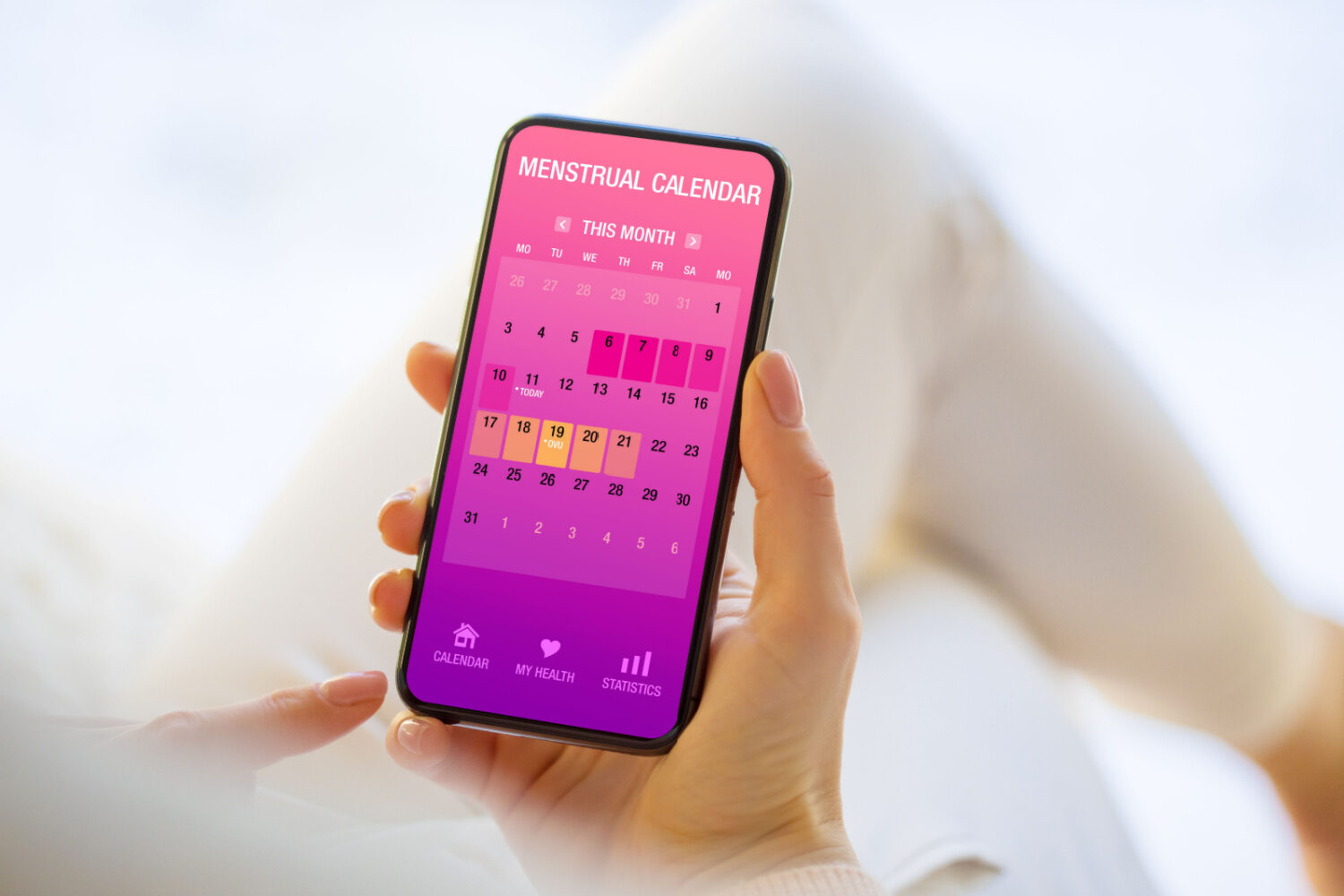
Are you planning to avoid pregnancy but still want to have a healthy sexual life? While many couples choose contraception methods to avoid pregnancy, some may not be able to do so. Factors such as intolerance to hormones, fear of needles and other personal reasons may cause some people or couples to avoid using contraception. In such cases, they may resort to having sex during safe period. So, how to calculate safe period to avoid pregnancy?
This process starts with a basic understanding of a standard menstrual cycle, its phases, and how your own menstrual cycle works. Along with that, you can take the help of charting methods, tools, and safe period calculators to track your safe and fertile periods. Here is everything you need to know about safe period and how safe and effective it is to help avoid pregnancy.
In This Article
- What is Safe Period ?
- Understanding Stages of Menstrual Cycle to Calculate Safe Period
- How to Calculate Safe Period for Not Getting Pregnant?
- What Are Fertility Awareness Methods (FAMs) to Calculate Safe Period?
- List of Top FAMs to Calculate Safe Period
- How Effective Are Fertility Awareness Methods?
- Safe Period Calculator to Avoid Pregnancy
- Who Cannot Use Safe Period Calculator?
- Things you should know while having Sex in the Safe Period
- FAQ’s
What is Safe Period?
‘Safe period’ suggests the days when a woman has less chance of getting pregnant. If you are not planning to have a baby and wish not to use contraception methods, this is the best time to plan on having intercourse with your partner.
A safe period is the time during which there is no egg present for the purpose of fertilization. This brings down your chances of getting pregnant. If you engage in sexual relations when there is no egg, you can’t get pregnant because this is the infertile period in a menstrual cycle.
To understand the safe period better, you must first understand the menstrual cycle. Most women are usually fertile around their ovulation phase which starts around 14 days before your period starts.
If you have a fairly regular menstrual cycle of around 28 days, it gets easy to pinpoint the time when you will be highly fertile. For most ladies, ovulation happens roughly 14 days before the following menstrual cycle begins.
The week after the first week of your period is generally considered safe period but some women may risk getting pregnant when they have sex on day 1 or day 2 of their periods (1).
In a menstrual cycle of 28 days, you must avoid having sex from day 9 to day 16 since these will be highly fertile days. Fertile period is the time when you have a higher chance of getting pregnant (2).
It is important to remember that safe period is always not the best way to avoid pregnancy. If you wish to avoid pregnancy altogether, contraceptives may still be your best bet. There is no part of a period cycle that will ensure 100% that you won’t get pregnant.
Understanding Stages of Menstrual Cycle to Calculate Safe Period

The first step to understanding the most safe period to have sex while avoiding pregnancy is to understand your menstrual cycle and how it works.
A standard menstrual cycle can be divided into four stages – menstruation, the follicular stage, i.e. pre-ovulation stage, the ovulation stage, and the luteal stage, i.e. post-ovulation stage). The cycle days for each of the stages mentioned below refer to a standard 28-day cycle. Your cycle days may vary if you have different durations or irregular menstrual cycles.
1. Menstruation
The menstruation phase or the periods last for 3 to 5 days in most women, sometimes for up to 7 days in some women. This is the time when the uterus lining from the previous cycle sheds and leaves the body in the form of blood and mucus. Your standard menstrual cycle is calculated from day 1 of your periods. The chances of getting pregnant when having sex during this period are very minimal though not impossible.
The menstruation phase also forms a part of the follicular phase since the follicles that carry eggs start forming and maturing.
2. Follicular Phase or Pre-Ovulatory Phase
This phase starts from day 1 of the menstrual cycle and lasts up to day 14 just before ovulation starts, hence the name pre-ovulatory phase (3). This phase contains the safe days which can last between day 3 to day 9 of the menstrual cycle.
3. Ovulation Phase
This is the stage when ovulation happens. A well-developed ovarian follicle bursts and releases an ovum, otherwise called an egg. The time just before and after the ovulation is known as the ovulation stage.
The ovulation phase is the most fertile phase (4). Women who are planning to have a baby should plan their intercourse around this time while those who do not want to get pregnant must avoid sex at this time.
This phase usually starts about 2 weeks before your next period. It is difficult to pinpoint when your ovulation will occur.
[Read : Important Facts About Ovulation]
4. Luteal Phase/Secretory Stage
The luteal phase is the last stage of the menstrual cycle. During this stage, the dominant follicle transforms into corpus luteum in the absence of fertilization resulting in pregnancy(5). This ultimately results in the woman getting her period bleed due to the degradation of the corpus luteum.
The luteal phase carries a lower chance of getting pregnant but having sex during this phase can still cause you to get pregnant in rare cases.
From the above break-up, it is clear that the week leading up to ovulation and the week after ovulation carry a higher chance of getting pregnant. The other weeks have a lower chance. But, it must be noted that safe period is not a sure shot method to avoid pregnancy.
How to Calculate Safe Period For Not Getting Pregnant?

The first step to calculate the safe period for avoiding pregnancy is to chart your menstrual cycle for a few months, say 6 to 8 months. Note the first day of your period for each month and how long each menstrual cycle lasts. This will give you the average length of your menstrual cycle. Based on this data, you can calculate your safe period by following the steps mentioned below.
- Make a note of the shortest number of days and the longest number of days a period has lasted.
- Subtract 18 from the shortest duration days of your period cycle. For example, if the shortest duration that a period cycle has lasted is 26 days, subtract 18 from it, and you will arrive at the number 8. 8 will be the first day of your fertile window.
- Now subtract 11 from the longest duration days of your period cycle. For example, if your longest period has lasted for 32 days, subtract 11 from it, and you will arrive at the number 21. 21 will be the last day of your fertile window.
Based on these calculations, in any given menstrual cycle, you will be highly fertile between day 8 and day 21. While this is just an example, you can follow this method to calculate your safe period to avoid pregnancy.
It is vital to remember that a woman’s cycle and the various menstrual phases may vary from one cycle to another. If you are truly planning to avoid pregnancy, relying just on the safe period may not give you 100% results. Contraceptives are the safest way to avoid pregnancy.
Calculating your safe period is beneficial in light of the fact that it will enable you to comprehend what days it is excellent to engage in sex without the assurance and with no pregnancy alarms. Realizing how to figure out your safe period is fundamental if you don’t wish to have a baby immediately.
However, the safe period calculator is an incredible strategy for contraception since it doesn’t include utilizing an IUD, ingesting hormonal birth control pills, or hormone infusions that can affect various ladies, running from extraordinary emotional episodes to weight gain and different issues that hamper one’s prosperity.
[Read : BBT (Basal Body Temperature) Chart]
What Are Fertility Awareness Methods (FAMs) to Calculate Safe Period?
Fertility Awareness, otherwise called natural family planning, is a method for foreseeing safe period days. Fertility awareness methods involves observing parameters such as basal body temperature and cervical mucus or charting calendars to monitor cycles or use a combination of both methods to calculate the safe period (6). These techniques are typically founded on specific signs your body gives because of the hormones that reason for ovulation.
FAM depends on the beneath presumptions.
- One egg is discharged in each cycle.
- Egg alive for 24 hours.
- Sperm live for six days and can prepare an egg during this period.
- A woman will be fertile for very nearly six days before ovulation and a few days after ovulation, so the complete number of productive days is seven to eight in each cycle.
The work of FAMs is to alarm you on your ovulation days. When you know your extended periods of ovulation, you can maintain a strategic distance from sex or utilize a contraceptive to ward off the sperms from the vagina.
It will assist you in knowing the unsafe days that arrive before and after ovulation. You can follow the fertility design, denoting the days when you are fertile, and the days you are not. You ought to do it cautiously as the example changes from month to month.
List of Top FAMs to Calculate Safe Period

FAMs or fertility awareness methods can be of three different types – symptoms-based methods, calendar-based methods, and a combination known as the sympto-thermal method.
1. Symptoms-Based Fertility Awareness Methods
Symptoms-based FAMs rely on your body’s symptoms and behavior to calculate your most fertile days. Once you are aware of your fertile days, you can avoid sex on these days. Symptoms-based FAMs include
1.1 Basal Body Temperature Method
Basal body temperature relies upon your internal body temperature which you have to chart and track to know when you ovulate (7). There will be a rise in temperature if you are ovulating.
1.2 Cervical Mucus or Ovulation Method
The presence, appearance, and consistency of your cervical mucus will change throughout your menstrual cycle. Observing these changes can help you track your safe days (8).
[Read : How To Detect Fertility Period With Cervical Mucus?]
2. Calendar-Based Fertility Awareness Methods

Calender-based fertility awareness methods are based on calendar calculations and need regular tracking and charting for a few months. These are of two types.
2.1. Calendar or Rhythm Method
The calendar method helps you chart your ovulation and safe periods. You will have to track your periods consistently for 6 to 8 months to be able to pinpoint your ovulation and safe periods.
2.2 Standard Days Method
The standard days method follows a similar tracking pattern to calendar method. This method is useful only for women who have fixed period cycles with standard length across most months. According to this method, the period between day 8 and day 19 of a menstrual cycle is considered safe period (9).
3. Sympto-Thermal Method
The sympto-thermal method is the most effective technique since it is a mix of all the above-mentioned methods. It includes body temperature, Ovulation Method, Rhythm Method alongside following cervix changes, breast tenderness, slight spotting, abdominal heaviness, and mild abdominal pain.
How Effective Are Fertility Awareness Methods?
Fertility awareness methods may not be a sure-shot way of avoiding pregnancy. Calculating safe period days is not a 100% reliable way to help prevent pregnancy. Even though a few women depend on their reliability, there is a decent possibility of disappointment as your periods may get irregular or some unexpected hormonal changes may happen that you may not know about. You are bound to expand your odds of not falling pregnant during safe period days that lessen the potential risk.
Here are a few steps to follow when employing safe period and FAMs as a way to avoid getting pregnant.
- Be careful with the safe period figuring and tail it strictly and precisely
- Have a partner who is similarly committed to engaging in sexual relations according to safe days
- Know, understand check, and outline your indications of fertility
- Use different types of contraception during the remainder of the days
Safe Period Calculator to Avoid Pregnancy

A safe period calculator or safe days calculator helps you calculate your most fertile days and most safe days when you can have sex to avoid getting pregnant. The calculator will track your period cycle over multiple months with your inputs and indicate the safe days when you can have sex. It will require you to enter data such as the first day of your period cycle over a period of a few months.
You can utilize these tools if the average duration of your menstrual cycle from the previous 6 to 8 months is in the range of 26 to 32 days, and the difference between the most limited and most extended cycles is seven days or less.
Who Cannot Use Safe Period Calculator?
You cannot use the safe period calculator if
- You have gynecological issues which cause your menstrual cycles to vary greatly or you have issues related to ovulation.
- The average duration of your menstrual cycle is under 26 days or over 32 days, and the difference between the briefest and most extended cycles over the most recent half-year is eight days or more.
- You have given birth. After giving birth, you can utilize the Safe Period Calculator directly after six regular menstrual cycles.
- You are arriving at your menopause
Things You Should Know While Having Sex in the Safe Period
Having sex with the intention of avoiding pregnancy when you are in the safe period can be tricky. Here are a few facts you must know.
- One of the most significant things understand about the safe period is that no period is 100% safe. Hormones can be unpredicatable resulting in surprise pregnancies even during safe periods though this is relatively uncommon.
- The safe period calculation, for the most part, works if your menstrual cycle (days between the beginning of one period and the next) is between 26 to 32 days. If the cycle is under 26 days or over 32 days, at that point the protected period estimation doesn’t work for you.
- In the instance of crisis, use contraception to abstain from getting pregnant.
Once you have understood how to calculate safe period to avoid pregnancy and calculated your safe period, having sex on the safe days reduces the risk of getting pregnant. But there is still a risk of surprise pregnancies and this is something you should understand when employing this method. While the risk is less, it is still there.
FAQ’s
1. How Many Days Before or After Periods is Safe?
A week before and a week after your periods are generally considered safe. But it is important to remember that these days are not 100% safe and not a sure shot way to avoid getting pregnant. This is because there are a number of factors such as hormones and varying cycle lengths at play.
2. What Are Fertility Awareness Methods or FAMs?
Fertility awareness methods allow you to calculate your safe days and most fertile days in any given cycle by understanding and charting your body’s behavior during each stage of the menstrual cycle. Common fertility awareness methods include the basal body temperature method, cervical mucus method, and calendar charting methods such as the rhythm method and the standard cycle method.
3. What is the Standard Days Method to Prevent Pregnancy?
The standard days method to prevent pregnancy states that days 8 to 19 are the most fertile days and you must avoid intercourse during these days while the other days of the cycle constitute the safe period where you can have sex and still avoid pregnancy. This method is only for women who have standard-length cycles. If your cycles vary from one month to another, this method is not for you.
References
- The “safe period” as a birth control measure – [https://www.ajog.org/article/S0002-9378(27)90410-4/fulltext]
- Relationship Between the Menstrual Cycle and Timing of Ovulation Revealed by New Protocols: Analysis of Data from a Self-Tracking Health App – [https://www.ncbi.nlm.nih.gov/pmc/articles/PMC5725625/]
- Menstrual Cycle Proliferative And Follicular Phase – [https://www.ncbi.nlm.nih.gov/books/NBK542229/]
- Timing of Sexual Intercourse in Relation to Ovulation — Effects on the Probability of Conception, Survival of the Pregnancy, and Sex of the Baby – [https://www.nejm.org/doi/full/10.1056/nejm199512073332301]
- Frontiers | Luteal Phase in Assisted Reproductive Technology – [https://www.frontiersin.org/articles/10.3389/frph.2020.595183/]
- Fertility awareness based methods for contraception – [https://www.cochranelibrary.com/cdsr/doi/10.1002/14651858.CD004860.pub2/abstract]
- Detection of ovulation, a review of currently available methods – Su – 2017 – [https://aiche.onlinelibrary.wiley.com/doi/full/10.1002/btm2.10058]
- Cervical mucus and contraception: what we know and what we don’t – [https://www.sciencedirect.com/science/article/abs/pii/S0010782417303918]
- Efficacy of a new method of family planning: the Standard Days Method – [https://www.sciencedirect.com/science/article/abs/pii/S0010782402002883]
Read Also: Can You Get Pregnant While On Your Period?

